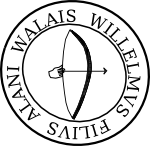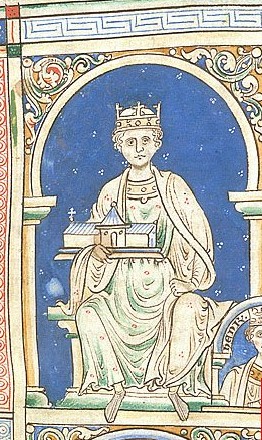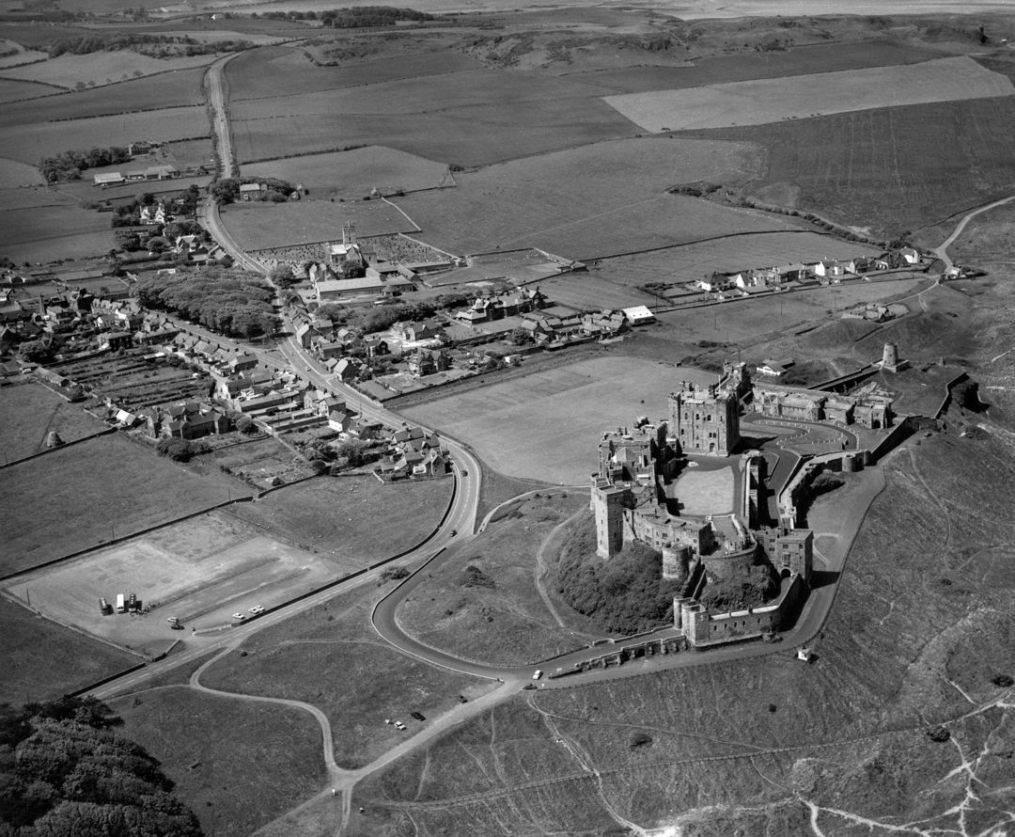|
Clan Heron
The Clan Heron was a lowland Scottish clan. One branch of the clan were border reivers who made a living by rustling cattle along the Anglo-Scottish border. Another branch were a landed family with their seat in Kirkcudbright. Origins of the Clan The Clan claims descent from the Herons of Chipchase Castle in Northumberland, in the English Middle-march. In a survey made of the Border in 1522, it was reported that: "Chipchase was the most convenient house for the keeper of Tynedale" and the Herons were described as "A hot tempered race, regularly in trouble with the authorities". It is known that they had feuds with Clan Tate and Clan Kerr. The name Heron is from the name ''de Heron'', a habitational name from Heron near Rouen in Normandy. The progenitor of the clan, Tihel de Heron, was a Norman who arrived in England with William the Conqueror in 1066 and is found on the Battle Abbey Roll and the Falaise Roll. He was granted land in Essex and his descendants spread to Northumb ... [...More Info...] [...Related Items...] OR: [Wikipedia] [Google] [Baidu] |
Anglo-Scottish Border
The Anglo-Scottish border () is a border separating Scotland and England which runs for 96 miles (154 km) between Marshall Meadows Bay on the east coast and the Solway Firth in the west. The surrounding area is sometimes referred to as "the Borderlands". The Firth of Forth was the border between the Picts, Picto-Gaels, Gaelic Kingdom of Alba and the Angles, Anglian Kingdom of Northumbria in the early 10th century. It became the first Anglo-Scottish border with the History of Anglo-Saxon England#English unification (10th century), annexation of Northumbria by Anglo-Saxon England in the mid-10th century. In 973, Kenneth II of Scotland, Kenneth, King of Scots attended the English king, Edgar the Peaceful, at King Edgar's council at Chester, his council in Chester. After Kenneth had reportedly done homage, Edgar rewarded Kenneth by granting him Lothian. Despite this transaction, the control of Lothian#Lothian under the control of the Angles, Lothian was not finally settle ... [...More Info...] [...Related Items...] OR: [Wikipedia] [Google] [Baidu] |
Rouen
Rouen (, ; or ) is a city on the River Seine in northern France. It is the prefecture of the Regions of France, region of Normandy (administrative region), Normandy and the Departments of France, department of Seine-Maritime. Formerly one of the largest and most prosperous cities of Middle Ages, medieval Europe, the population of the metropolitan area (french: functional area (France), aire d'attraction) is 702,945 (2018). People from Rouen are known as ''Rouennais''. Rouen was the seat of the Exchequer of Normandy during the Middle Ages. It was one of the capitals of the Anglo-Normans, Anglo-Norman dynasties, which ruled both England and large parts of modern France from the 11th to the 15th centuries. From the 13th century onwards, the city experienced a remarkable economic boom, thanks in particular to the development of textile factories and river trade. Claimed by both the French and the English during the Hundred Years' War, it was on its soil that Joan of Arc was tried ... [...More Info...] [...Related Items...] OR: [Wikipedia] [Google] [Baidu] |
William Wallace
Sir William Wallace ( gd, Uilleam Uallas, ; Norman French: ; 23 August 1305) was a Scottish knight who became one of the main leaders during the First War of Scottish Independence. Along with Andrew Moray, Wallace defeated an English army at the Battle of Stirling Bridge in September 1297. He was appointed Guardian of Scotland and served until his defeat at the Battle of Falkirk in July 1298. In August 1305, Wallace was captured in Robroyston, near Glasgow, and handed over to King Edward I of England, who had him hanged, drawn and quartered for high treason and crimes against English civilians. Since his death, Wallace has obtained an iconic status far beyond his homeland. He is the protagonist of Blind Harry's 15th-century epic poem '' The Wallace'' and the subject of literary works by Jane Porter and Sir Walter Scott, and of the Academy Award-winning film '' Braveheart''. Background William Wallace was a member of the lesser nobility, but little is definitely known of ... [...More Info...] [...Related Items...] OR: [Wikipedia] [Google] [Baidu] |
John Heron-Maxwell
John Maxwell Heron-Maxwell (5 September 1836 – 26 January 1899) was a Scottish Liberal Party politician who sat in the House of Commons from 1880 to 1885. Heron-Maxwell was the son of Rev Michael Heron-Maxwell of Heron and Kirroughtree, and his wife Charlotte Frances Burgoyne, eldest daughter of Captain Frederick William Burgoyne RN. He was educated at Harrow School and joined the 1st Royal Scots Regiment, where he was a captain. He was a J.P. and deputy lieutenant for Kirkcudbrightshire and Wigtown. At the 1880 general election Heron-Maxwell was elected Member of Parliament (MP) for Kirkcudbright. He held the seat until 1885. Heron-Maxwell was the last member of the Heron family to inherit the family seat of Kirroughtree House Kirroughtree House is the heritage-listed mansion house (Category B listing.) of the Kirroughtree estate. It occupies a prominent position 1 mile (1.6 km) northeast of the town of Newton Stewart in the Galloway region of southwest Scotla ... [...More Info...] [...Related Items...] OR: [Wikipedia] [Google] [Baidu] |
Kirroughtree House
Kirroughtree House is the heritage-listed mansion house (Category B listing.) of the Kirroughtree estate. It occupies a prominent position 1 mile (1.6 km) northeast of the town of Newton Stewart in the Galloway region of southwest Scotland. The main access is from the A712 close to its junction with the A75. Kirroughtree House was the family seat of the Heron family from the 14th or the 15th century until the 1880s. The mansion house is now a luxury hotel. While remnants of an older house have been found in a blocked-off cellar, the current house dates to 1719 with extensions to the northeast added in the 19th and early 20th century. The house has connections with both James Boswell and Robert Burns, each of whom stayed at Kirroughtree House as guests in the later 18th century. The estate During the heritorship of the Herons, the estate included Creebridge House and the Newton Stewart Golf Course to the west, and extended beyond Palnure. To the east, where the Fo ... [...More Info...] [...Related Items...] OR: [Wikipedia] [Google] [Baidu] |
Robert The Bruce
Robert I (11 July 1274 – 7 June 1329), popularly known as Robert the Bruce (Scottish Gaelic: ''Raibeart an Bruis''), was King of Scots from 1306 to his death in 1329. One of the most renowned warriors of his generation, Robert eventually led Scotland during the First War of Scottish Independence against England. He fought successfully during his reign to regain Scotland's place as an independent kingdom and is now revered in Scotland as a national hero. Robert was a fourth great-grandson of King David I, and his grandfather, Robert de Brus, 5th Lord of Annandale, was one of the claimants to the Scottish throne during the "Great Cause". As Earl of Carrick, Robert the Bruce supported his family's claim to the Scottish throne and took part in William Wallace's revolt against Edward I of England. Appointed in 1298 as a Guardian of Scotland alongside his chief rival for the throne, John Comyn of Badenoch, and William Lamberton, Bishop of St Andrews, Robert resigned in 13 ... [...More Info...] [...Related Items...] OR: [Wikipedia] [Google] [Baidu] |
Scarborough Castle
Scarborough Castle is a former medieval Royal fortress situated on a rocky promontory overlooking the North Sea and Scarborough, North Yorkshire, England. The site of the castle, encompassing the Iron Age settlement, Roman signal station, an Anglo-Scandinavian settlement and chapel, the 12th-century enclosure castle and 18th-century battery, is a scheduled monument of national importance. Fortifications for a wooden castle were built in the 1130s, but the present stone castle dates from the 1150s. Over the centuries, several other structures were added, with medieval monarchs investing heavily in what was then an important fortress that guarded the Yorkshire coastline, Scarborough's port trade, and the north of England from Scottish or continental invasion. It was fortified and defended during various civil wars, sieges and conflicts, as kings fought with rival barons, faced rebellion and clashed with republican forces, though peace with Scotland and the conclusion of civil and ... [...More Info...] [...Related Items...] OR: [Wikipedia] [Google] [Baidu] |
Bamburgh Castle
Bamburgh Castle is a castle on the northeast coast of England, by the village of Bamburgh in Northumberland. It is a Grade I listed building. The site was originally the location of a Celtic Brittonic fort known as ''Din Guarie'' and may have been the capital of the kingdom of Bernicia from its foundation in 420 to 547. In that latter year, it was captured by King Ida of Bernicia. After passing between the Britons and the Anglo-Saxons three times, the fort came under Anglo-Saxon control in 590. The fort was destroyed by Vikings in 993, and the Normans later built a new castle on the site, which forms the core of the present one. After a revolt in 1095 supported by the castle's owner, it became the property of the English monarch. In the 17th century, financial difficulties led to the castle deteriorating, but it was restored by various owners during the 18th and 19th centuries. It was finally bought by the Victorian era industrialist William Armstrong, who completed its resto ... [...More Info...] [...Related Items...] OR: [Wikipedia] [Google] [Baidu] |
William The Lion
William the Lion, sometimes styled William I and also known by the nickname Garbh, "the Rough"''Uilleam Garbh''; e.g. Annals of Ulster, s.a. 1214.6; Annals of Loch Cé, s.a. 1213.10. ( 1142 – 4 December 1214), reigned as King of Scots from 1165 to 1214. His 48-year-long reign was the second longest in Scottish history, and the longest for a Scottish monarch before the Union of the Crowns in 1603. Early life William was born around 1142, during the reign of his grandfather King David I of Scotland. His parents were the king's son Henry and Ada de Warenne. William was around 10 years old when his father died in 1152, making his elder brother Malcolm the heir apparent to their grandfather. From his father, William inherited the Earldom of Northumbria. David I died the next year, and William became heir presumptive to the new king, Malcolm IV. In 1157, William lost the Earldom of Northumbria to Henry II of England. Reign Malcolm IV did not live for long, and upon his death on 9 D ... [...More Info...] [...Related Items...] OR: [Wikipedia] [Google] [Baidu] |
Border Reivers
Border reivers were Cattle raiding, raiders along the Anglo-Scottish border from the late 13th century to the beginning of the 17th century. They included both Scotland, Scottish and England, English people, and they raided the entire border country without regard to their victims' nationality. Their heyday was in the last hundred years of their existence, during the time of the House of Stuart in the Kingdom of Scotland and the House of Tudor in the Kingdom of England. Background Scotland and England were frequently at war during the late Middle Ages. During these wars, the livelihood of the people on the Borders was devastated by the contending armies. Even when the countries were not formally at war, tension remained high, and royal authority in either or both kingdoms was often weak, particularly in remote locations. The difficulty and uncertainties of basic human survival meant that communities and/or people kindred to each other would seek security through group streng ... [...More Info...] [...Related Items...] OR: [Wikipedia] [Google] [Baidu] |
Battle Abbey Roll
The Battle Abbey Roll is a commemorative list, lost since at least the 16th century, of the companions of William the Conqueror, which had been erected or affixed as a memorial within Battle Abbey, Hastings, founded ''ex-voto'' by Duke William on the spot of the slaying of King Harold in the Battle of Hastings in 1066. Traditional sources It is known to modern historians only from supposed 16th century copies of it published by Leland, Holinshed and Duchesne, all imperfect and corrupt. Holinshed's is much the fullest, but of its 629 names several are duplicates. The versions of Leland and Duchesne, though much shorter, each contain many names found in neither of the other lists. Several names on the role are disputed; Camden, as did Dugdale after him, held them to have been interpolated at various times by the monks, "not without their own advantage." Later writers went further, Sir Egerton Brydges denounced the roll as "a disgusting forgery," and E. A. Freeman dismissed i ... [...More Info...] [...Related Items...] OR: [Wikipedia] [Google] [Baidu] |
Le Héron
Le Héron () is a commune in the Seine-Maritime department in the Normandy region in north-western France. Geography A small forestry and farming village situated at the confluence of the small Héron river with the Andelle, some east of Rouen at the junction of the D 13, D 46 and the D 62 roads. Population Places of interest * An eighteenth-century château and its park. * The seventeenth-century fortified manorhouse at Malvoisine. Manoir de Malvoisine also appeared in the movie ''Bon Voyage, Charlie Brown (and Don't Come Back!!)''. * A nineteenth-century chapel. * The remains of the church of Notre-Dame et Saint-Gilles, dating from the twelfth century, burnt down in 1879. See also *Communes of the Seine-Maritime department The following is a list of the 708 communes of the French department of Seine-Maritime. The communes cooperate in the following intercommunalities (as of 2020): [...More Info...] [...Related Items...] OR: [Wikipedia] [Google] [Baidu] |






